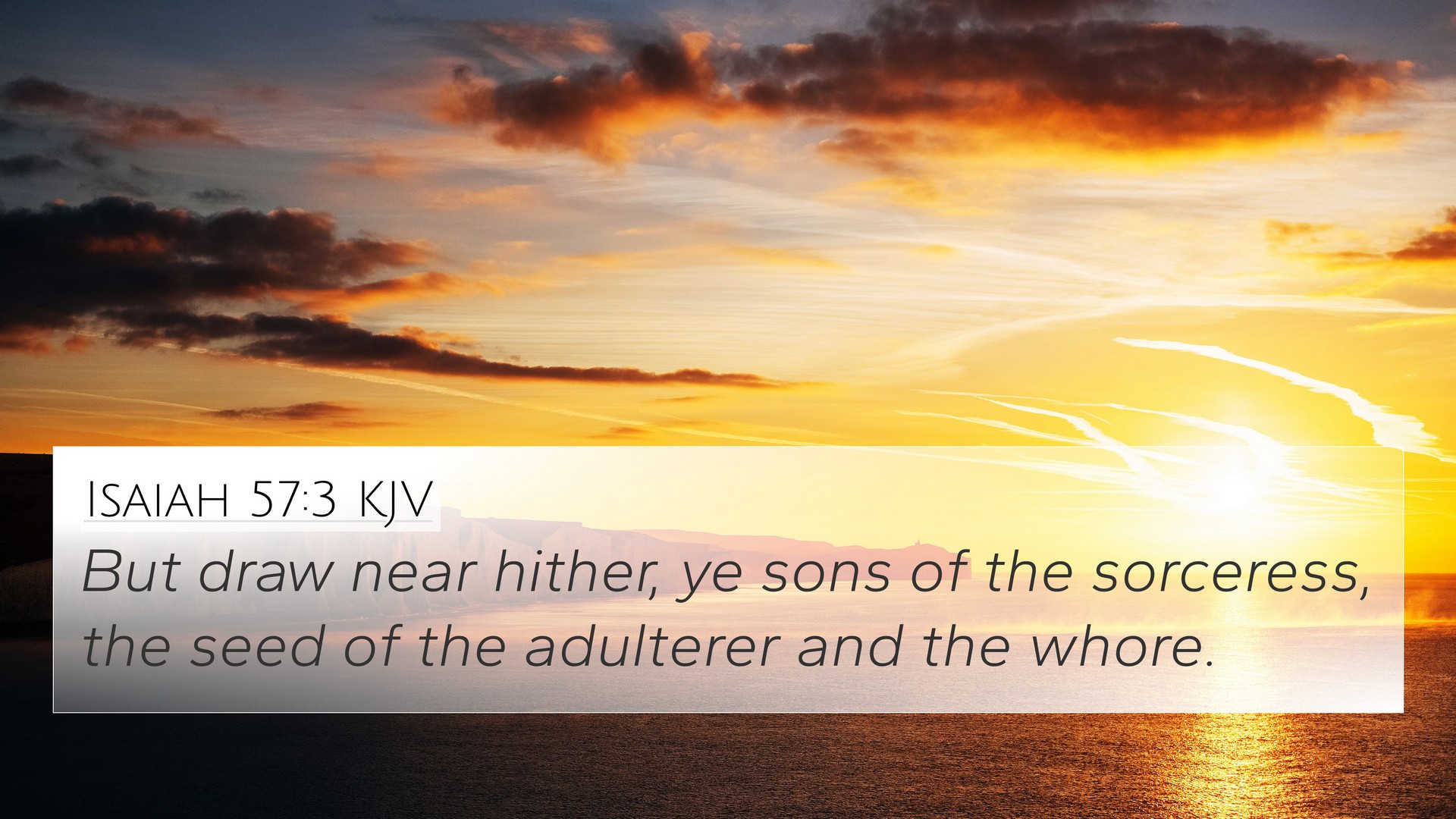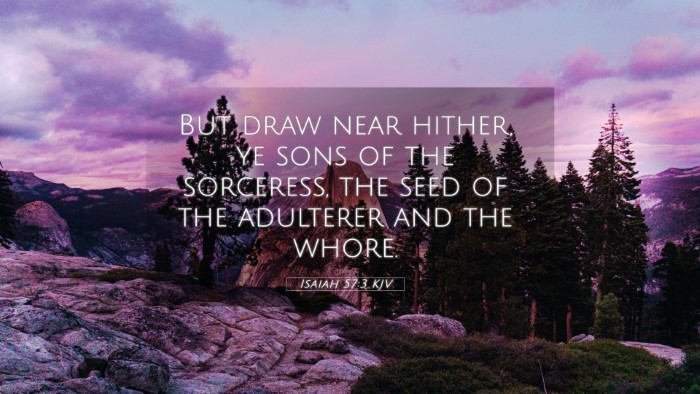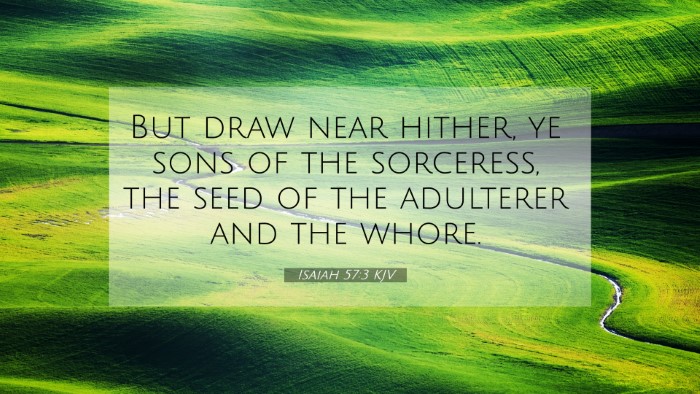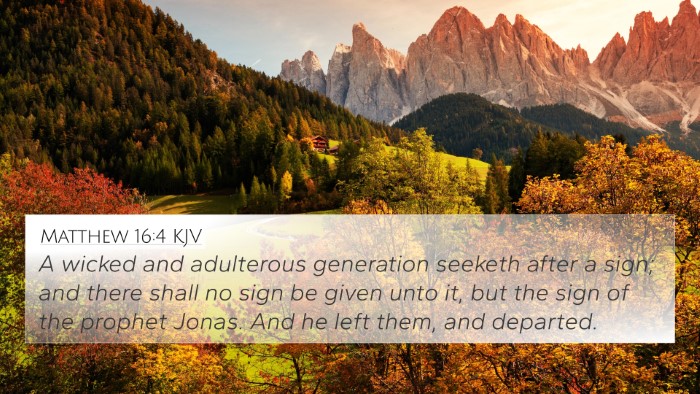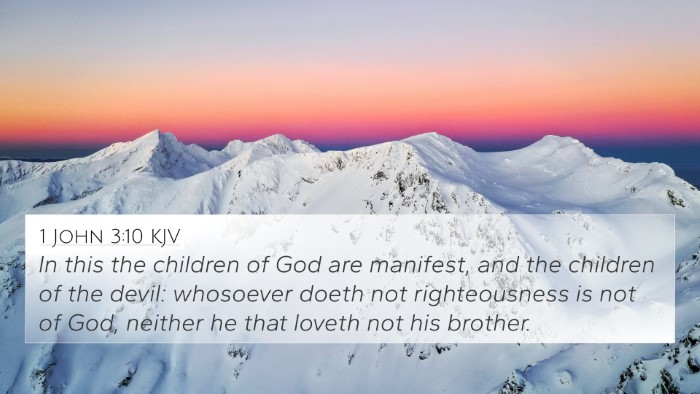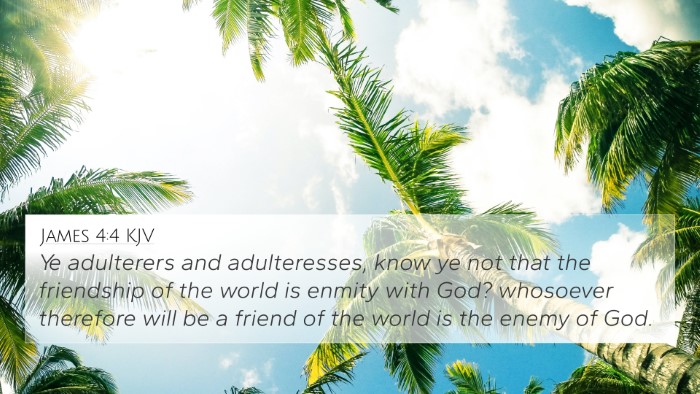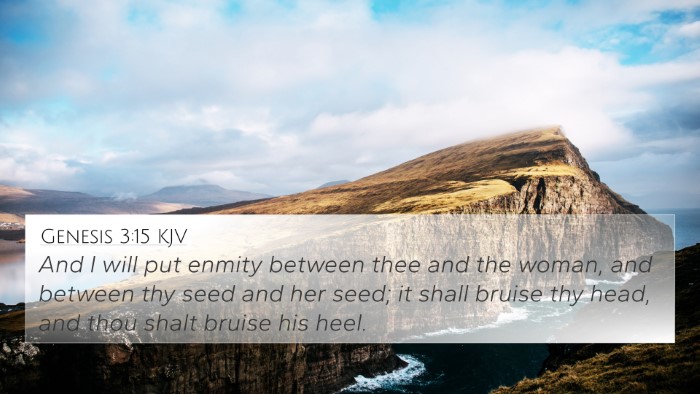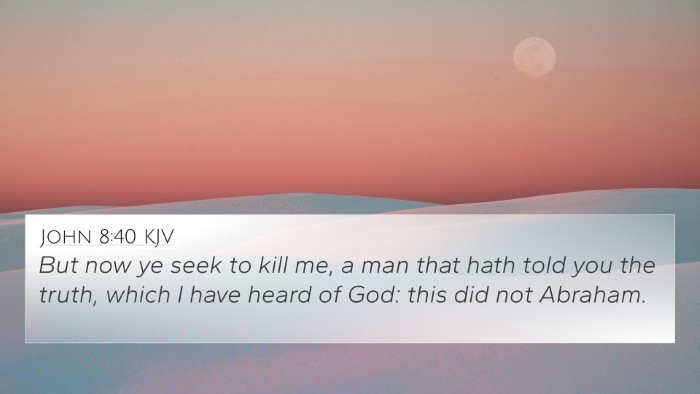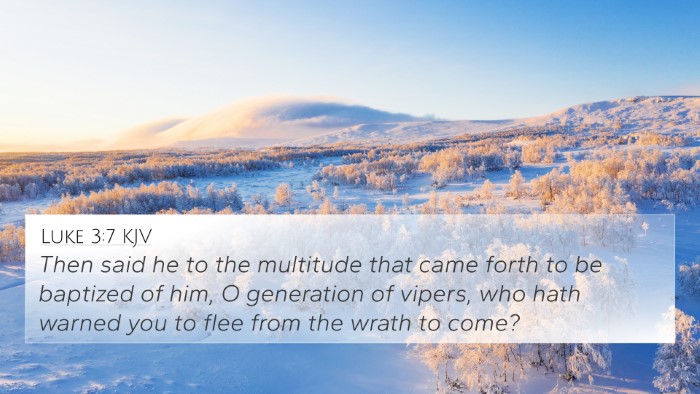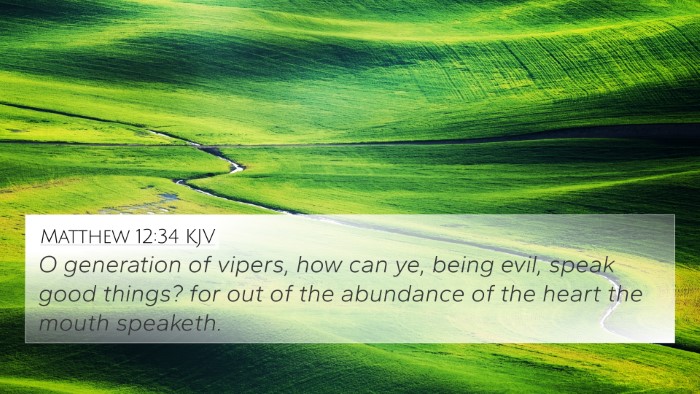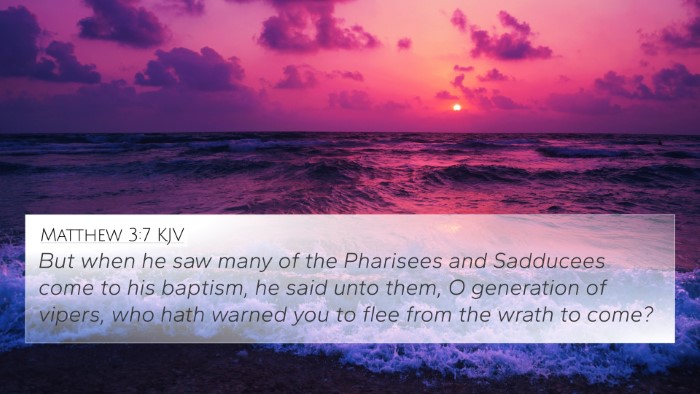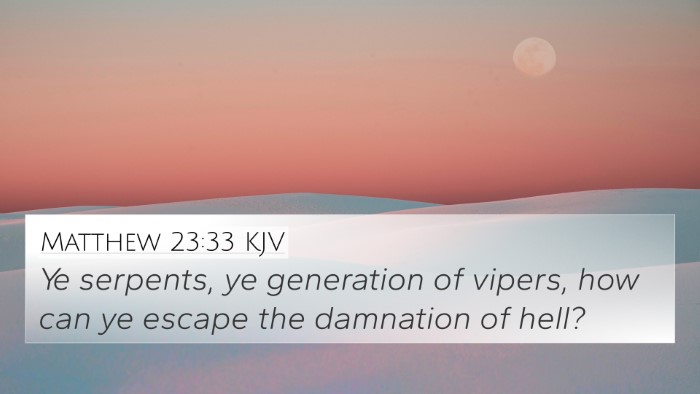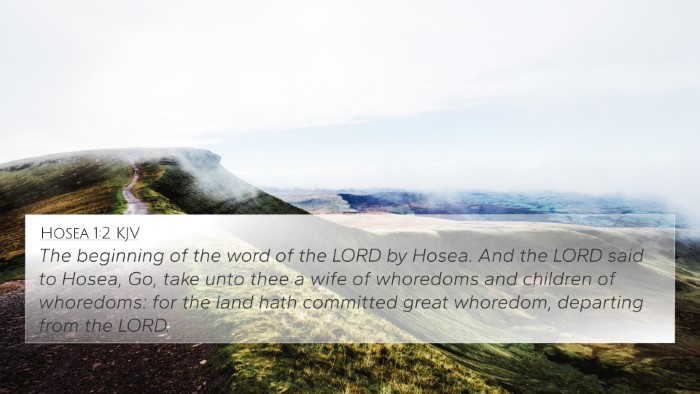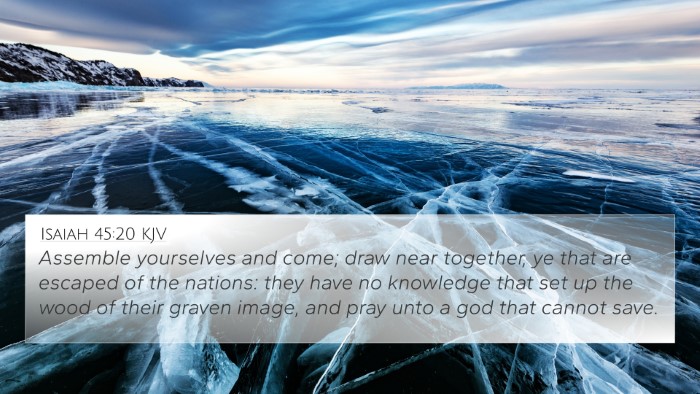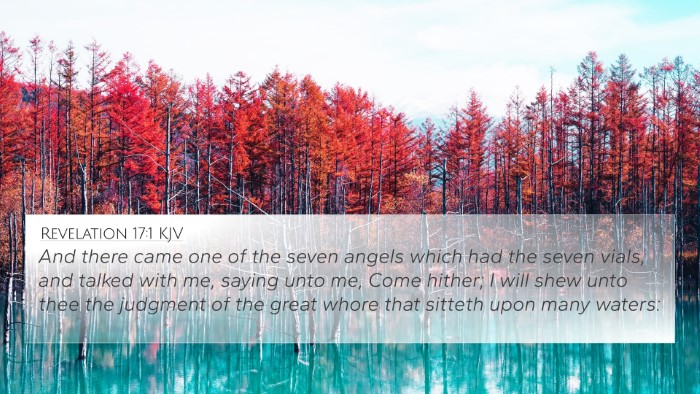Understanding Isaiah 57:3
Isaiah 57:3 states:
"But draw near hither, ye sons of the sorceress, the seed of the adulterer and the whore."
This verse speaks to the sinful nature of certain groups during the time of Isaiah, particularly addressing the people who engaged in idolatry and moral corruption. In examining the meaning of this verse, insights drawn from public domain commentaries such as those by Matthew Henry, Albert Barnes, and Adam Clarke will guide our understanding.
Meaning and Interpretation
The verse is a direct address to those who have strayed from God’s path, specifically invoking imagery associated with sorcery and adultery. Let's delve into the interpretations from our key commentators:
-
Matthew Henry:
Henry views this as a warning against the corrupt practices that were prevalent among the Israelites. He emphasizes that God’s call to repentance is firm, addressing those who follow false teachings and idols. This call serves as a reminder of the consequences of such actions and the need to turn back to God.
-
Albert Barnes:
Barnes elaborates that the 'sons of the sorceress' refers metaphorically to those who spiritually commit adultery against God. He highlights that such figures not only turn away from God but also lead others astray. The strong language underscores the gravity of their sin and the urgency for them to return to righteousness.
-
Adam Clarke:
Clarke notes that this verse signifies a form of judgment. God's intention is to expose the spiritual infidelity of the people. He connects this appeal to similar themes found throughout the prophetic literature, where God often confronts His people on their unfaithfulness.
Cross-References
Isaiah 57:3 relates to several other Bible verses that underscore themes of judgment and the call for repentance. Here are 10 valuable cross-references:
- Jeremiah 2:20: This verse speaks to the idolatry of Israel as ‘playing the harlot.’
- James 4:4: James warns that friendship with the world is enmity with God, reinforcing the concept of spiritual adultery.
- Ezekiel 16:30-32: Ezekiel uses similar imagery of adultery to depict Israel’s unfaithfulness to God.
- Hosea 4:12: Hosea talks about seeking guidance from idols, paralleling the sins addressed in Isaiah 57:3.
- Revelation 21:8: This passage outlines the fate of those who continue in sinful ways, including sorcery and immorality.
- Isaiah 1:4: Here, God laments about the sinful nation, reminding them of their transgressions.
- Proverbs 7:25-27: These verses depict the dangers of sexual immorality, akin to the spiritual warnings in Isaiah.
- Matthew 12:34: Jesus speaks about the evil that comes from within, highlighting the root of sin.
- Revelation 22:15: This lists those excluded from the New Jerusalem, echoing the warnings in Isaiah.
- Micah 1:7: This verse details the consequences of idolatry in vivid language, similar to Isaiah's admonitions.
Concluding Thoughts
Isaiah 57:3 serves as a crucial passage for understanding the themes of sin, judgment, and the divine call for repentance. The illustrations of spiritual unfaithfulness draw connections between Old Testament prophecies and New Testament teachings, emphasizing that the call to holiness transcends time. Proper use of tools for Bible cross-referencing can deepen our understanding of such complex themes and aid in comparative Bible verse analysis.
Thematic Bible Verse Connections
To engage with the biblical text meaningfully, one can employ a Bible concordance or a cross-reference Bible study method. These resources enable deeper explorations of how different passages relate to each other, revealing a rich tapestry of scriptural dialogue. For Bible study, identifying connections between the prophetic messages of the Old Testament and the teachings of the New Testament can enhance one’s spiritual insights.
By understanding specific verses, like Isaiah 57:3, while utilizing comprehensive Bible cross-reference materials, believers can embark on a more informed and reflective study of the Scriptures.
